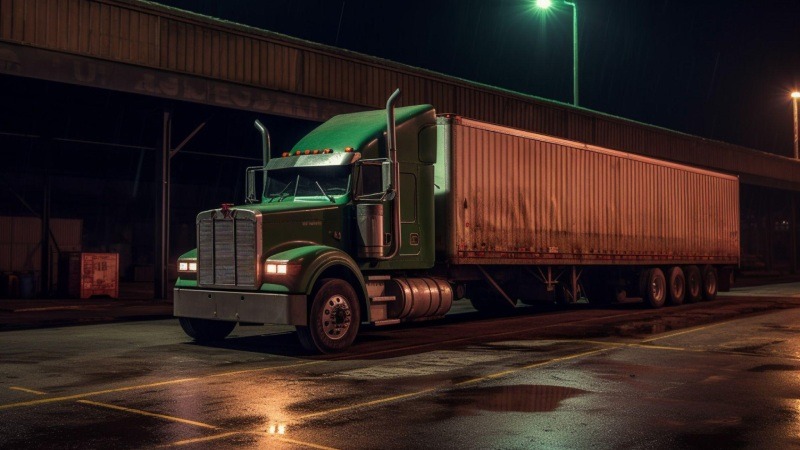Transport businesses constantly face evolving risks. Accident costs keep climbing, client demands grow stricter, and regulations shift to address new realities. Amid this hectic backdrop, choosing a robust commercial auto liability policy goes beyond meeting legal minimums and focuses on strengthening your bottom line.
Below, we highlight recent trends affecting liability coverage and offer strategies for selecting a plan that meshes with your unique operations.

Rising Claims and the Push for Higher Limits
Over the past decade, trucking accident claims have surged, driven by larger lawsuits and rising medical bills. This reality prompts many transport operators to lift their liability limits. A single severe crash, especially with a fully loaded vehicle, can lead to damages well beyond basic coverage.
Before immediately raising limits, assess your cargo type, route density, and driver profiles. Balanced coverage levels often align with the true scope of risk rather than an arbitrary high figure.
Telematics for Safer Driving and Lower Costs
Accident prevention is the best way to control claims. Telematics track speed, braking, and route changes, letting fleets monitor driver behavior in real time. Early intervention helps reduce collisions, which insurers often reward with lower premiums or better policy terms.
Even small fleets see benefits when drivers know their performance is recorded. It encourages better habits, fewer speeding incidents, and safer overall operations. Regular coaching sessions based on telematics data can cement these gains.
Niche Coverage Through Risk Retention Groups
Traditional insurance carriers sometimes struggle to accommodate specialized fleets or unique routes. Risk Retention Groups (RRGs) fill that gap by uniting businesses with similar exposures. This can foster more precise coverage. An example is STAR Mutual RRG which is a licensed Insurance Co structured as a Mutual RRG. STAR Mutual RRG offers competitive coverage since policyholders collectively own the company, incentivizing fewer claims and lower premiums.
STAR Mutual RRG’s policies specifically cover trucks, trailers, cargo vans, and various other business-class vehicles, allowing transport companies to receive targeted protection tailored exactly to their operational needs.
Contact your insurance agent about STAR Mutual RRG to explore fleet-specific coverage tailored to your business. Unlike traditional insurers, STAR Mutual RRG leverages proprietary software to issue policies within minutes, significantly reducing downtime and keeping your fleet operations running smoothly.
RRGs often streamline underwriting, making it simpler to add new vehicles or revise routes. They also have incentives to keep claims low, since members essentially own the entity. However, it’s wise to confirm the group’s financial strength and multi-state reach if your business crosses different regions.
Multi-State Challenges and Solutions
Expanding into new territories complicates liability coverage. Varying regulations might force you to increase policy limits or add endorsements for specific cargo. Handling these updates through a single, flexible carrier simplifies things. Using separate state-level policies raises administrative load and costs.
Consistent coverage across borders prevents accidental gaps. Real-time communication with your insurer ensures each addition or route tweak is reflected in your policy. That’s especially vital if you land a time-sensitive contract requiring immediate operational changes.
Balancing Premiums and Protection
Covering your risks adequately should never feel like a waste, but budgets are finite. There are ways to optimize your policy without sacrificing safety:
- Higher Deductibles: Lower the premium, but keep cash on hand for claims.
- Selective Coverage: Insure specialized vehicles at higher limits, while smaller local vans might use standard limits.
- Safe Driver Discounts: Some insurers reward consistent safety records or advanced driver training programs.
It’s a dance between safeguarding your assets and keeping expenses reasonable. Regular discussions with your provider or broker can pinpoint coverage gaps and potential savings.
Emerging Tech and Future-Proofing
Commercial auto insurance no longer rests on guesswork. As vehicles incorporate advanced driver-assistance systems, insurers track data on how effectively these features reduce crashes. In the future, autonomous trucks could alter risk profiles even further. Fleets adopting new tech gain competitive advantages on the road and lower premiums.
Meanwhile, new environmental standards or economic shifts could lead to legislative changes. Keeping an ear to the ground prevents surprise hikes in required liability coverage.
Tips for Ongoing Policy Management
- Annual or Biannual Reviews: Your vehicle lineup and routes can shift quickly. Ensure your policy evolves, too.
- Track Incidents: Every minor bump reveals potential improvements in training or routes. Use these insights to negotiate better terms.
- Maintain Strong Records: Clean driver files and well-documented maintenance logs can sway underwriters in your favor.
- Stay Engaged: Regular communication with your insurer or RRG leads to policy refinements that align with real-world operations.
Following these steps helps you refine coverage and could reduce premiums long-term.
Conclusion
Commercial auto liability coverage isn’t static. Rising claim values, telematics innovations, and diverse regulatory rules keep shifting the ground beneath fleet owners. A policy matched to your vehicles, routes, and risks protects finances and reassures your clients.
Whether you choose a mainstream insurer, a specialized RRG, or a blend of solutions, the goal remains the same: mitigate the blow of accidents and ensure smooth operations. In the end, consistent policy reviews, careful adoption of safety tech, and proactive communication with your provider make all the difference. You can’t predict every challenge on the road, but you can face them with coverage designed to protect what matters most.